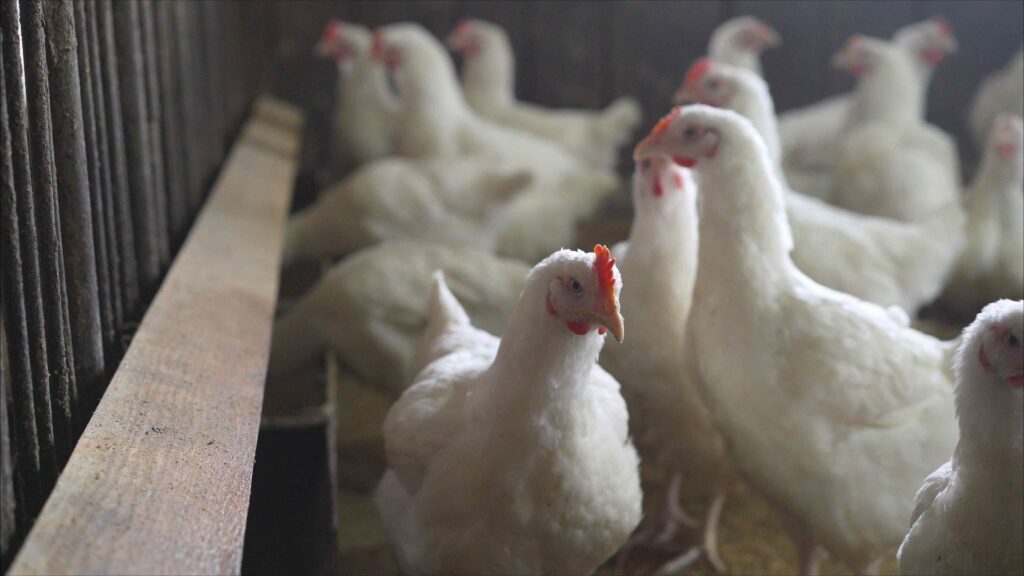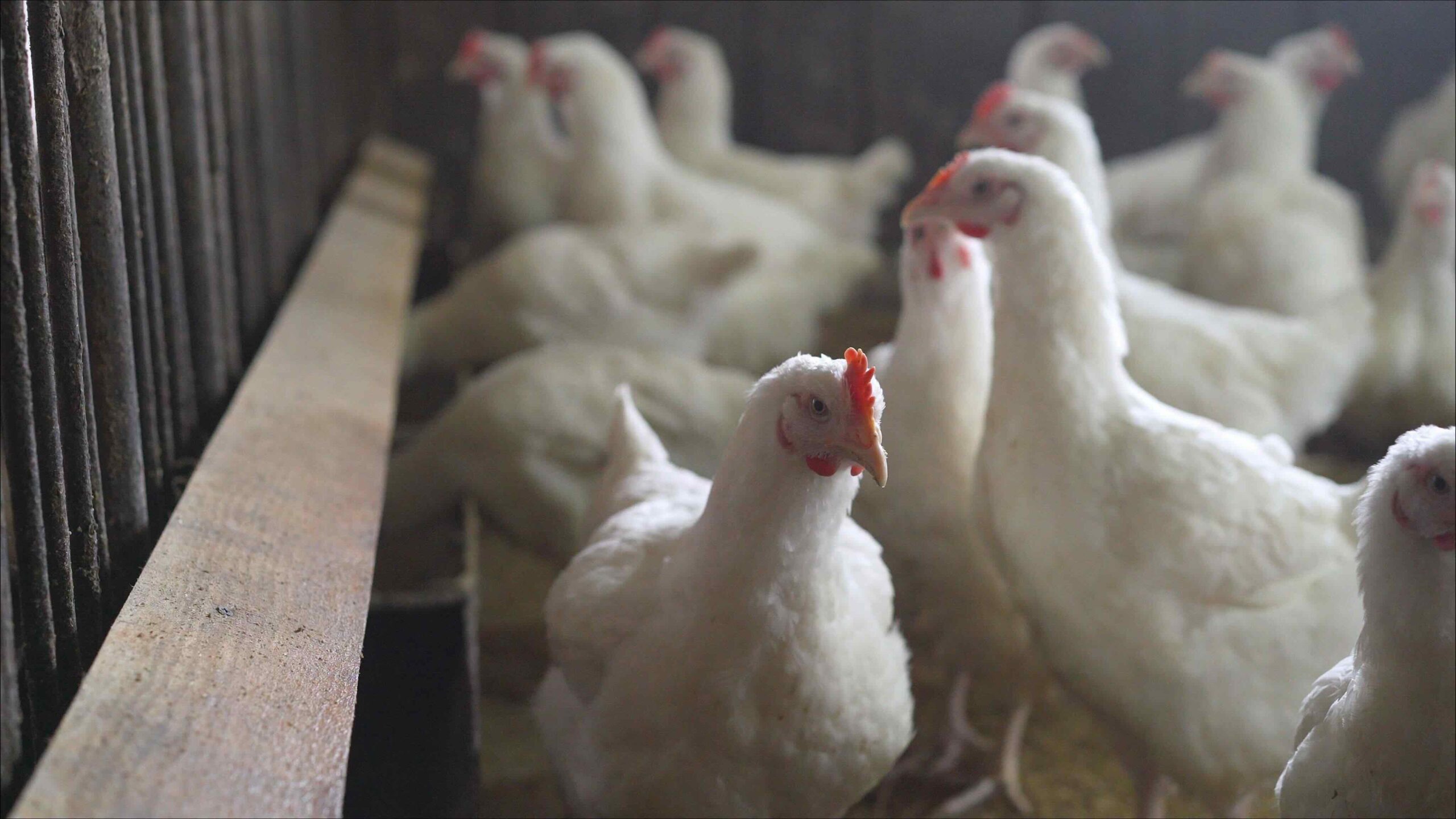
The largest expense in animal production is the cost of feed, which accounts for about three-fourths of all on-farm poultry production costs. As feedstock prices continue to rise, improving your flock’s ability to convert feed into meat efficiently can be the key to profitability.
By understanding and optimizing feed conversion, farmers can reduce the amount (and cost) of feed needed to raise healthy poultry and even healthier profits. Here’s what you need to know to reduce your production costs while improving yields from broiler birds.
What is a feed conversion ratio?
In animal husbandry, the feed conversion ratio measures the relationship between the amount of feed fed and the amount of weight gained by the animal consuming it. This ratio effectively measures an animal’s efficiency for converting feed into the desired output, which in the case of broiler chickens is meat, or in other words, the animal’s body mass.
You can calculate how much feed is needed per pound of weight gained by dividing the total input (feed fed) by the output of total weight gain.
Feed Conversion Ratio (FCR) = Feed Input / Weight Gain
When animals receive diets that meet their exact nutritional requirements, they convert feed more efficiently, which lowers the ratio. So, farmers can lower their flock’s feed conversion ratio by tailoring feed formulations to meet the nutritional requirements of chickens throughout various life stages.
These feed conversion rates help farmers make informed decisions to lower production costs and maximize their operation’s profitability.
What factors affect feed conversion?
Feed conversion for each animal may be influenced by:
- The animal itself, depending on its age, health, weight, and genetic makeup.
- The feed formulation, which may differ in terms of the quality and composition of ingredients and how they were produced and processed.
- The surrounding environment, such as temperature, ventilation, cleanliness, and other conditions affecting the farms and facilities where animals are kept.
- The feed management strategy, which refers to the types of feeders used, the feeding schedule followed, and even the availability of drinking water.
Because of these factors, each animal’s feed conversion ratio will shift throughout its life stages. For example, a small 4-pound broiler has an average FCR of about 1.65, which means it consumes 1.65 pounds of food for every pound of meat it gains. The bigger the chicken, the more feed it will need to gain additional weight, so a 6-8 pound broiler will have a slightly higher FCR of 1.85 or more. A large 10-pound broiler has an average FCR close to 2.
FCR improvements over time
Over the past few decades, industry advancements and improvements have made a notable impact on broiler production efficiency as producers and processors keep looking for new ways to improve feed conversion ratios.
In the 1950s, for example, an average broiler weighed approximately 0.5 kilograms after 42 days. By the 1970s, an average broiler of the same age reached a weight of approximately 1.5 kg. In the mid-2000s, a 42-day-old broiler might weigh as much as 3 kg. This remarkable weight gain was made possible through ongoing improvements in feed conversion.
Some of the innovations that have helped to optimize feed conversion include:
- Genetic improvements to strategically breed animals based on their natural propensity to gain weight.
- Technical advances have enhanced the efficiency of poultry production. For example, modern ventilation and heating/cooling systems help control airflow, humidity, and temperatures inside chicken production houses to keep flocks in optimal conditions.
- Improvements in feed formulation have helped develop improved feed inputs to meet producers’ desired outputs. High-quality ingredients produced and processed safely can contribute significantly to the overall feed conversion ratio.
However, remember that each improvement’s added cost is also factored into the equation when calculating FCR. Improving feed conversion is a delicate balance of keeping costs in check while supplying the nutrients and conditions required for animals to thrive.
The advantages of expeller-pressed meal
When it comes to optimizing feed conversion, a farmer’s ultimate goal is to lower production costs while maintaining or increasing an animal’s weight. Sourcing high-quality expeller-pressed meal might be one solution.
Feed trials have shown that expeller-pressed meal processed with the Anderson Dox™ Extruder and Expeller Press is nutritionally equivalent to other meals on the market—providing a high-quality feed ingredient with optimal protein and energy for poultry diets. Other studies have shown that poultry eating less per pound gained when fed extruded feed ingredients, resulting in more efficient conversion.
While most feed ingredients like soybean meal are processed through solvent extraction, this expensive method uses hazardous chemicals like hexane—leaving behind trace chemicals that must be removed before the products can be used in feed. Health concerns continue to drive demand for more natural, chemical-free alternatives like mechanical pressing. Anderson’s High Shear Extrusion System, which consists of the Dox Extruder and the Expeller Press, is designed to minimize energy consumption so farmers can maximize their profits.
Anderson helps feed mills around the world optimize their processing systems to produce higher-quality feedstock and unlock higher profits. Contact Anderson today to learn more about improving your feed conversion ratio with the right equipment.
